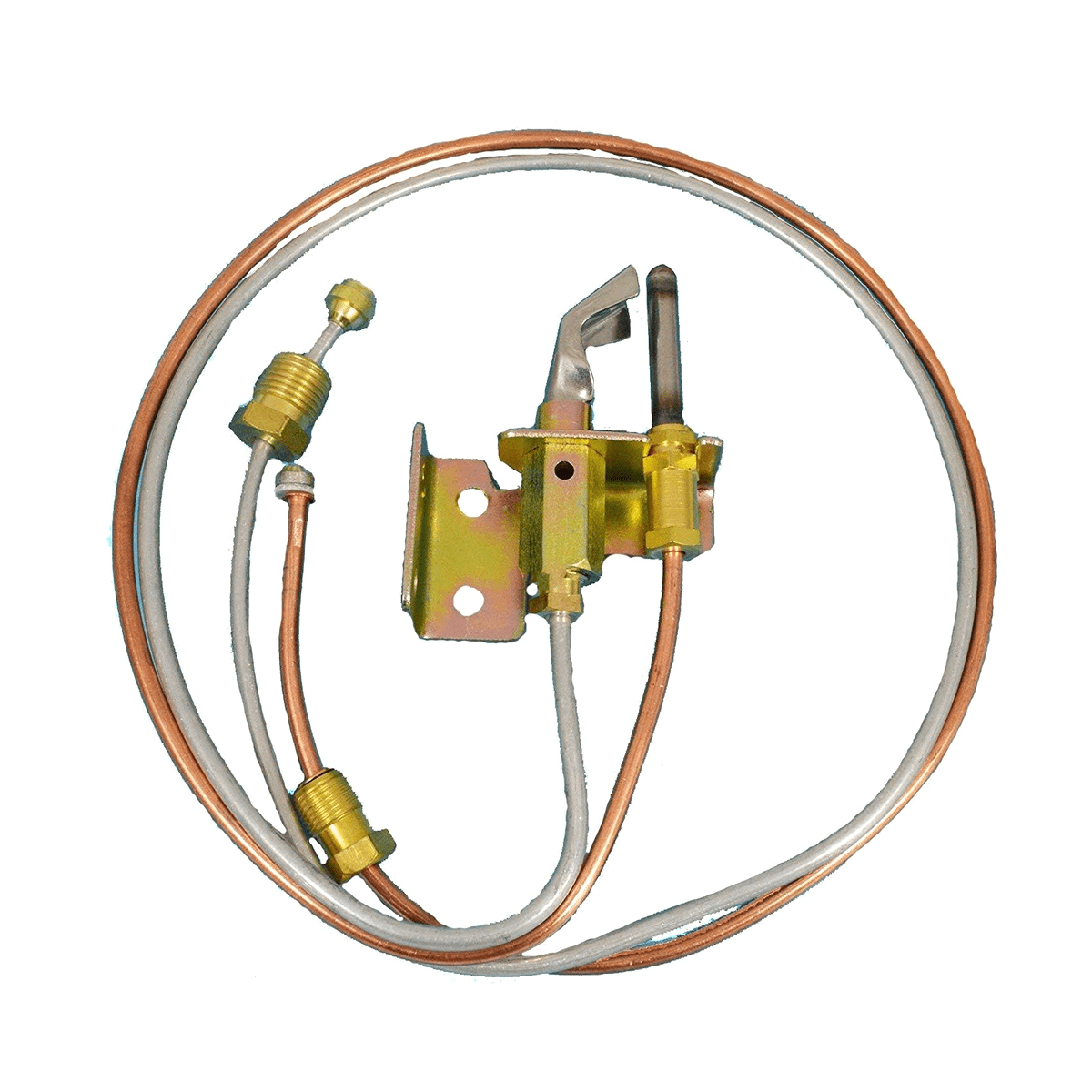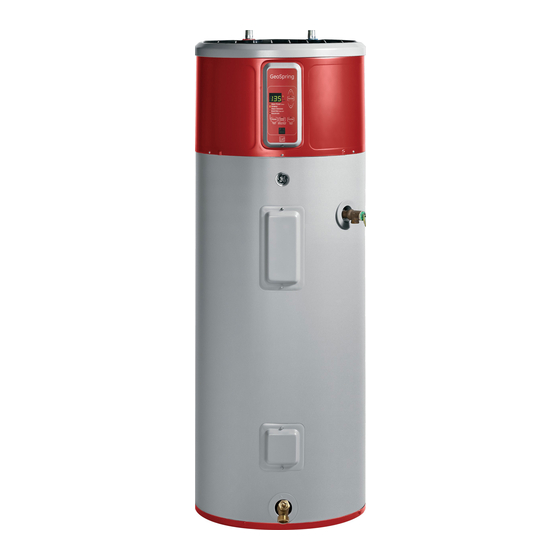Are you tired of waking up to cold showers or unexpected leaks from your GE water heater? You’re not alone.
Dealing with water heater issues can be frustrating, especially when you rely on it for your daily comfort. But what if you could troubleshoot these problems on your own? Imagine the satisfaction of not only saving money on repair bills but also understanding your appliance better.
In this guide, we’re diving into the most common GE water heater troubles, offering you simple solutions that can get your heater back on track. Ready to tackle those pesky problems with confidence? Keep reading to discover how you can turn your water heater woes into wins.
Page Contents
Common Issues
When your GE water heater starts acting up, it can be frustrating. Some common issues can disrupt your daily routine. Understanding these problems can help you address them quickly and effectively.
No Hot Water
Finding no hot water when you turn on the tap can be alarming. This is a common issue that often stems from a few key problems. Check if the pilot light is out, which might require a simple reignition.
Another common reason is a tripped circuit breaker. Make sure the power source is functioning properly. If these steps don’t work, the thermostat might be faulty and in need of replacement.
Insufficient Hot Water
If your showers are shorter than you’d like, you might be experiencing insufficient hot water. This often happens when the water heater tank is too small for your household’s needs. Consider upgrading to a larger unit.
Mineral build-up in the tank can also reduce capacity. Regularly flushing the tank can help maintain efficiency. Have you noticed this issue worsening over time?
Water Temperature Fluctuations
Water temperature fluctuations can be particularly annoying. This might occur due to a malfunctioning thermostat. It’s worth checking if the settings are correct and consistent.
Another cause could be a failing heating element. Replacing this component can stabilize your water temperature. Have you ever tried adjusting the thermostat settings yourself?
Addressing these common issues can save you time and discomfort. Regular maintenance can prevent many of these problems from arising. Are you ready to take control of your water heater’s performance?

Credit: www.madbiker.sk
Diagnostic Tools
Troubleshooting a GE water heater becomes easy with diagnostic tools. These tools help identify issues quickly and accurately. Proper usage ensures efficient resolution, enhancing heater performance and longevity.
When your GE water heater starts acting up, diagnosing the problem might seem daunting. However, with the right tools, you can pinpoint issues quickly and efficiently. Understanding how to use these diagnostic tools can be a game-changer in maintaining your water heater. Let’s dive into some essential tools and techniques that can make troubleshooting your GE water heater easier and more effective.Multimeter Use
A multimeter is a versatile tool that can help you check electrical connections. This device measures voltage, current, and resistance, giving you insight into whether your water heater is receiving the power it needs. Have you ever wondered if your heating element is getting the right amount of electricity? A multimeter can answer that question. By setting it to measure voltage and placing the probes on the terminals, you can see if there’s a consistent power flow. Imagine the relief of knowing your issue is simply a power outage rather than a costly repair. With a multimeter, you can identify power issues swiftly.Thermostat Testing
The thermostat is crucial for controlling the water temperature in your heater. If you’re experiencing lukewarm water, testing the thermostat could reveal the problem. You might be surprised to find that the thermostat is set incorrectly or has malfunctioned. Adjusting or replacing it can restore the desired water temperature. What if your thermostat is faulty? Using a multimeter to check its continuity can confirm whether it’s working properly. If there’s no continuity, it’s time for a replacement.Heating Element Inspection
The heating element is the heart of your water heater. If it’s not functioning, your water won’t get hot. Inspecting the heating element can tell you if it’s time for a replacement. Visual inspection can reveal signs of wear or damage. If the element looks burnt or corroded, it’s likely the culprit behind your cold showers. Can you imagine starting your day with freezing water because of a faulty element? By regularly inspecting and testing the heating element with a multimeter, you can avoid this chilly inconvenience. Incorporating these diagnostic tools into your troubleshooting routine can empower you to handle issues confidently. With practice, you’ll become adept at identifying problems before they escalate, saving time and money. Are you ready to tackle your water heater challenges head-on?Repair Techniques
Repairing your GE water heater can feel like a daunting task, but with the right techniques, you can tackle it effectively. The key lies in understanding the common issues and knowing how to fix them. Whether you’re a seasoned DIY enthusiast or a beginner, these techniques are straightforward and practical, helping you get your water heater back in action.
Replacing Heating Elements
Ever faced cold showers despite having a water heater? It might be time to replace the heating elements. Begin by turning off the power to avoid any electrical mishaps. Drain the tank to prevent leaks during the replacement. Carefully remove the old element using a wrench and replace it with a new one. It’s a simple fix that can significantly improve your water heater’s efficiency.
Adjusting Thermostat Settings
Sometimes, your water heater might just need a little tweak in its thermostat settings. Check if your water is too hot or not hot enough. Adjusting the thermostat can solve this issue. Simply locate the thermostat and turn the dial to your desired temperature. Remember, setting it too high can lead to scalding. Would you prefer a quick, comfortable shower or waiting minutes for the water to heat? Adjust accordingly.
Flushing The Tank
Ever noticed sediment build-up at the bottom of your tank? This can reduce your heater’s performance. Flushing the tank is a straightforward process that clears out these sediments. Turn off the power and water supply, and attach a hose to the drain valve. Allow the water to drain completely. This routine maintenance can extend the life of your water heater. Isn’t it worth spending a few minutes to save on energy bills?
Repairing a GE water heater doesn’t have to be overwhelming. With these techniques, you can confidently address common issues and improve your heater’s performance. Remember, a little maintenance goes a long way in ensuring your comfort. What’s the next repair technique you’re ready to tackle?

Credit: www.manualslib.com
Preventive Maintenance
Regular preventive maintenance ensures your GE water heater runs smoothly. Check for leaks and unusual noises to avoid potential problems. Keep the heater clean for better efficiency and a longer lifespan.
Maintaining your GE water heater is crucial to ensuring its longevity and efficiency. Preventive maintenance can save you from unexpected cold showers and costly repairs. By adopting a regular maintenance routine, you can keep your water heater in top-notch condition and enjoy consistent hot water at home.Regular Cleaning
Dust and sediment can accumulate in your water heater over time, impacting its efficiency. Regular cleaning helps maintain optimal performance. Drain your water heater every six months to remove any sediment buildup. This simple task can enhance heating efficiency and extend the life of your appliance. Have you ever noticed a decrease in water temperature or strange noises? It might just be time for a good cleaning session.Anode Rod Inspection
The anode rod is your water heater’s unsung hero, preventing rust and corrosion. Inspect this rod annually and replace it every three to five years. A worn anode rod can lead to rusted tanks and leaks. Checking this component is a small step that protects your entire system. Have you checked your anode rod lately? It might be the key to a longer-lasting water heater.Temperature Setting Adjustments
Setting the right temperature can save energy and prevent scalding. Adjust your water heater to 120°F (49°C) for optimal safety and efficiency. A higher setting can lead to energy waste and increase the risk of burns. Is your water too hot or too cold? A simple temperature adjustment might be all you need. Small tweaks can make a big difference in comfort and cost savings. Regular preventive maintenance might seem like a chore, but it pays off. Your GE water heater deserves attention to keep it running smoothly. What steps will you take today for a more efficient tomorrow?Professional Help
Sometimes, a GE water heater may need professional intervention. Not all issues can be solved at home. Recognizing when to seek expert help is crucial. It ensures your water heater functions efficiently and safely.
When To Call A Technician
Unusual noises can signal serious problems. Do not ignore them. Persistent leaks need immediate attention. They might cause water damage. If the water temperature fluctuates wildly, it’s time to call a professional. Safety concerns like electrical issues require expert help. Attempting to fix them yourself can be dangerous.
Finding Reliable Service Providers
Start by asking friends or family for recommendations. They might know trusted technicians. Check online reviews for local service providers. Look for consistent positive feedback. Verify their credentials. Ensure they are licensed and insured. A reliable provider should offer a warranty on their work.
Cost Considerations
Costs can vary based on the problem’s complexity. Simple repairs might be affordable. Extensive issues can be more expensive. Always request a written estimate. It helps avoid unexpected charges. Consider the long-term benefits. Fixing issues promptly may save future repair costs.

Credit: www.youtube.com
Frequently Asked Questions
How Do I Reset My Ge Water Heater?
To reset your GE water heater, turn off the power supply. Locate the reset button on the thermostat. Press and hold it until it clicks. Restore power to the unit. Check if the heater functions properly. Always consult the manual for specific instructions related to your model.
What Is The Most Common Problem With The Water Heater?
The most common water heater problem is a lack of hot water. This often results from a faulty thermostat or heating element. Regular maintenance can prevent these issues, ensuring efficient operation. Always consult a professional for repairs to avoid further damage.
What Is The First Thing To Check When There Is No Hot Water?
Check if the water heater’s power supply is on. Inspect the circuit breaker for any tripped switches. Make sure the thermostat is set correctly. Verify if the pilot light is ignited in gas heaters. Ensure the water heater’s temperature setting is sufficient for hot water production.
How Do I Reset My Water Heater?
To reset your water heater, turn off the power supply. Wait a few minutes, then turn it back on. Check the reset button, usually located near the thermostat, and press it. If problems persist, consult the manufacturer’s manual or a professional technician for further assistance.
Conclusion
Troubleshooting your GE water heater can seem challenging. But with patience, you can solve many issues. Check the power source first. Examine the thermostat settings next. Ensure the heater elements work properly. Regular maintenance helps avoid bigger problems. If problems persist, calling a professional is smart.
They have the expertise needed. Understanding your heater’s basics can save time and money. Remember, safety is important. Always turn off power before repairs. Keep your water heater running smoothly with these tips. Happy troubleshooting!
